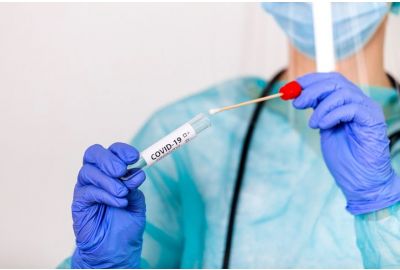Introduction:
In March 2024, the Centers for Disease Control and Prevention (CDC) implemented its biggest changes yet to their COVID-19 guidelines. As the landscape of COVID-19 continues to change, staying informed about the latest guidelines and recommendations proves important. Let's delve into the highlights of these updated guidelines.
What’s New:
The new guidance aims to bring a “unified approach” to common respiratory viral illnesses, such as COVID-19, flu, and RSV. As part of the new guidelines, CDC recommends:
- Individuals who contract one of these viruses are recommended to stay home and away from others. Treatment is available for those with COVID-19 and the flu, which can lessen symptoms and lower the risk of severe illness. The recommendations suggest returning to normal activities when, for at least 24 hours, symptoms are improving overall, and if a fever was present, it has been gone without use of a fever-reducing medication.
- Once people resume normal activities, they are encouraged to take prevention strategies for the next 5 days to curb disease spread. These may include taking more steps for cleaner air, enhancing hygiene practices, wearing a well-fitting mask, keeping a distance from others, and/or getting tested for respiratory viruses.
“Today’s announcement reflects the progress we have made in protecting against severe illness from COVID-19,” announced CDC Director Dr. Mandy Cohen. “However, we still must use the commonsense solutions we know work to protect ourselves and others from serious illness from respiratory viruses—this includes vaccination, treatment, and staying home when we get sick.”
Vaccination Recommendations:
The CDC still emphasizes the importance of vaccination as the most effective tool in controlling the spread of COVID-19. It recommends vaccination for all eligible individuals, including booster doses as per the latest recommendations.
Masking:
The guidelines provide nuanced recommendations on masking based on local transmission rates, vaccination coverage, and individual risk factors.
In areas with substantial to high transmission rates, or for individuals at increased risk of severe illness, wearing masks (particularly in crowded or poorly ventilated settings) is strongly advised.
In low transmission areas with high vaccination rates, mask-wearing may be optional for fully vaccinated individuals in certain settings, although discretion is advised, especially for those with underlying health conditions or who are immunocompromised.
Testing:
Regular self-testing with at-home COVID-19 tests remains an essential strategy for identifying and containing outbreaks. The guidelines recommend testing for symptomatic individuals, close contacts of confirmed cases, and in specific settings such as healthcare facilities, congregate settings, and schools.
Point-of-care rapid antigen tests are increasingly available and can provide quick results, aiding in prompt isolation and contact tracing efforts.
Travel:
Travel guidelines continue to evolve in response to these updates. The CDC advises travelers to stay informed about destination-specific requirements and recommendations, including testing and quarantine protocols.
Fully vaccinated individuals may have fewer restrictions on domestic travel, but international travel guidelines may vary based on destination and vaccination status.
Public Health Measures:
Beyond individual behaviors, the CDC emphasizes the importance of community-level interventions, like ensuring access to testing and healthcare services, and implementing strategies to reduce transmission in high-risk settings.
Collaboration between public health authorities, healthcare providers, and the broader community has been crucial in containing the spread of COVID-19 and mitigating its impact.
Conclusion:
As we navigate the ongoing challenges posed by COVID-19, staying informed is essential for safeguarding our health and well-being. While progress has been made with vaccination efforts, the emergence of new variants underscores the need for continued vigilance and adaptability. By working together and following evidence-based recommendations, we can mitigate the spread of the virus and move towards a future where COVID-19 no longer poses a significant threat to our communities.






